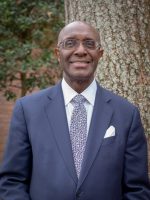 Source: AdobeStock.
Source: AdobeStock.
Decades of underrepresentation across the mainstream financial system has resulted in fewer opportunities for underserved communities, including communities of color, to create a stable financial footing and build generational wealth. The lack of access to resources, tools and financial literacy programs only serve to widen the gap between those with opportunity and those left behind.
As an industry, we have a responsibility to level the playing field. Part of that responsibility includes imparting financial knowledge in meaningful ways and at the right times. People's ability to effectively manage their finances is reliant on their understanding of the financial system and how to navigate it. The less financial knowledge people have, the less prepared they are to address financial challenges as they arise. And learning from mistakes in the financial world can be very expensive lessons.
Recommended For You
Most of us in the financial services industry have some form of financial education program, whether collateral, webinars, in-person seminars, social media content or virtual events. While these serve to provide a baseline understanding of the financial system, more focused resources are necessary to effectively reach communities most in need. Content needs to be catered to each audience and include relevant discussions that matter to them and the financial realities of their lives. We need to do more.
Financial Literacy Is a Journey, and Each Consumer Is Different
Teaching basic topics, such as saving or creating a budget, and eventually applying for student loans, building credit or investing, empowers children to ask questions and actively seek information as they get older. And progress is happening. In a March 2022 survey by the Council for Economic Education, 23 states required high school students to take a personal finance course and 25 states required high school students to take an economics course.
But financial education shouldn't end in high school. There are plenty of learning opportunities and teachable moments for young adults. For instance, newly enrolled college students could be navigating student loans or applying for credit cards, and perhaps upperclassmen are preparing to graduate from college and can greatly benefit from financial knowledge to help them generate income from their degrees. That's why organizations, such as the Society for Financial Education & Professional Development (SFE&PD), have worked closely with hundreds of historically Black colleges and universities (HBCUs).
Post-graduation, maybe there's a larger focus on home buying, car leasing or retirement. Whatever the case may be, the financial services industry must invest in our minority and underserved communities to help close the wealth gap.
Financial Education Works, It Just Depends on Who Is Delivering It
While we recognize the value of financial education, there are many detractors who feel otherwise. There's a strong belief among some that financial literacy might go in one ear and out the other, and won't resonate with the audience – but that couldn't be further from the truth. Financial education works, but its effectiveness depends on the person delivering the message.
All too often, financial literacy programs are delivered without consideration to the culture or the unique challenges that any given audience experiences, and that's created a lack of trust. In order to build that trust, we recommend financial institutions work as partners with organizations respected in the community, such as faith-based organizations, Community Development Financial Institutions (CDFIs) and non-profits, which understand the day-to-day struggles of the people they serve.
We've also witnessed initiatives, such as SFE&PD's Student Ambassador Program, uplift entire communities. Engaging college students with relevant and actionable takeaways has enabled students to take that financial knowledge and share it with family, friends, and other community members. Remember people don't always want to be taught by "institutions," sometimes learning from peers is more impactful.
Investing In Underserved Communities Is the First Step Forward
So many people, particularly those from underserved communities, have been significantly impacted, and the financial services industry has a responsibility to uplift those communities.
Financial education is essential for everyone; the more proficient people are in managing their finances, the better positioned their households are for upward mobility. Everyone has some form of financial resources, albeit at varied levels. Financial education helps people maximize the resources they do have. Building trust with minority and underserved communities, engaging alongside respected community partners, and reaching them with relevant financial knowledge is one way to help close the wealth gap.
Rod Griffin is Senior Director of Consumer Education and Advocacy at Experian.
 Rod Griffin
Rod Griffin Theodore Daniels is Founder and President of the Society for Financial Education and Professional Development, Inc. (SFEPD), a New Alexandria, Va.-based non-profit focused on financial and economic literacy.
 Theodore Daniels
Theodore Daniels © Touchpoint Markets, All Rights Reserved. Request academic re-use from www.copyright.com. All other uses, submit a request to [email protected]. For more inforrmation visit Asset & Logo Licensing.






